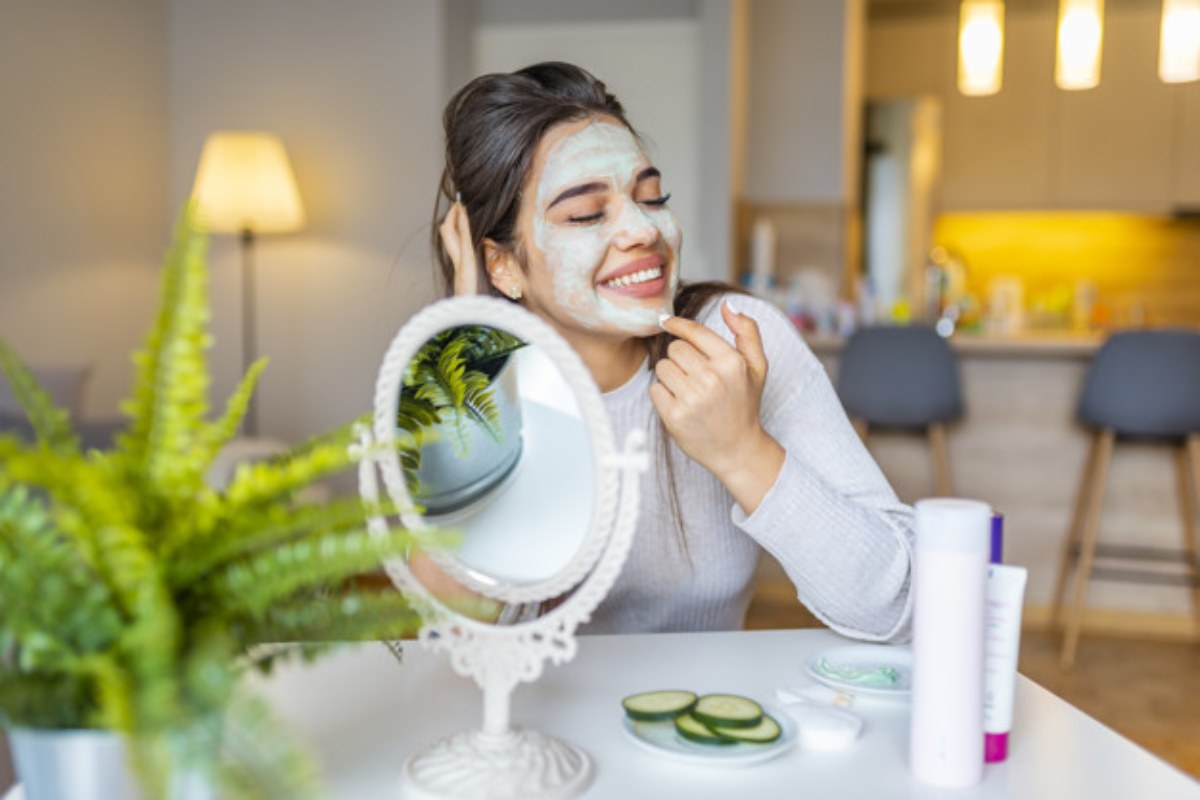Let’s face it– we could all incorporate a little more TLC into our skincare routine. These DIY face masks are an affordable and great go-to for taking care of that skin of yours.
There are so many options for face masks out there. You can sometimes even just open up your kitchen cabinet and vois la! You’ve got everything you need.
Let’s look at some great DIY face mask ingredients you can use for your specific skin type.
Table of Contents
Oily Skin
If you have oily skin, you understand the struggle of finding the right products that won’t leave your face greasier than before.
If your skin is frequently oily, you naturally produce more sebum (the oil that is produced from glands from skin pores). Sometimes diet or hormonal changes can cause the skin to become more oily. In which case, you might be more prone to acne breakouts.
Individuals whose hormones are fluctuating often or who’re doing hormone-altering treatments may experience more acne from oily skin. If you think you may be experiencing gender dysphoria, you can take the test here: gender dysphoria.
Doing a facemask to help extract the sebum from your pores at least once a week is a great idea to nourish your skin and de-clog those pores.
Here are some ingredients you can throw in your mask at home:
- Yogurt
- Honey
- Turmeric
- Cornmeal
- Oatmeal
- Rosewater
- Aloe
- Tea tree (1-2 drops only!)
- Clay
- Charcoal
Dry Skin
Having dry skin can make your face itchy or chapped, and even make you break out into rashes at times. When your skin doesn’t provide enough sebum, it tends to leave your face extra dry and in need of lots of moisture.
Gentle exfoliants like brown sugar are good to remove dry dead skin cells, and oils and deep moisturizing creams help to keep that skin hydrated.
Some ingredients you’ll want to throw in your DIY mask are:
- Fresh avocado
- Olive oil
- Sweet almond, apricot, coconut, & avocado oil
- Honey
- Brown sugar
Combination Skin
If you have combination skin, it means you probably have an oily T-zone (forehead, nose, and chin area) while the other parts of your face are more normal/dry.
It’s not very practical to use two different products on these different parts of your face, so finding a well-balanced product that doesn’t dry out your skin but is oil-free may be your best bet.
However, when applying a mask, it’s not a bad idea to use certain ingredients on your T-zone made for oily skin. That might mean you mix up a clay mask with a couple of drops of tea tree and turmeric (or anything else from the dry skin list above) and apply it just to your forehead, nose bridge, and chin.
Other parts of your face, if it’s more on the dry side, you can pick some other options from the dry skin list above. For example a combination of honey, almond oil, and avocado.
If your cheeks and the rest of your face are more a balance between the two, otherwise considered “normal” then feel free to use any combination without leaning too heavily on the oils or the extra drying ingredients, like tea tree oil.
Here are some ingredients to add to your combination skin mask:
- Banana
- Oatmeal
- Honey
- Clay
- Charcoal
- Rosewater
It’s Mask Time, Honey!
As you can see, some of the ingredients overlap. For example, honey can be thrown in any mask for its anti-inflammatory and antibacterial properties. Other ingredients will help to nurture your specific skin type and should leave you feeling fresh and glowing after.
It’s best to do a mask like this once a week as to not over-treat the skin. You can make it into a routine weekly or bi-monthly self-care routine.
Now, it’s time to open up the kitchen cabinet or hit the grocery store and take care of that skin!
Author Bio:

Marie Miguel has been a writing and research expert for nearly a decade, covering a variety of health- related topics. Currently, she is contributing to the expansion and growth of a free online mental health resource with Mind-Diagnostics.org. With an interest and dedication to addressing stigmas associated with mental health, she continues to specifically target subjects related to anxiety and depression.

